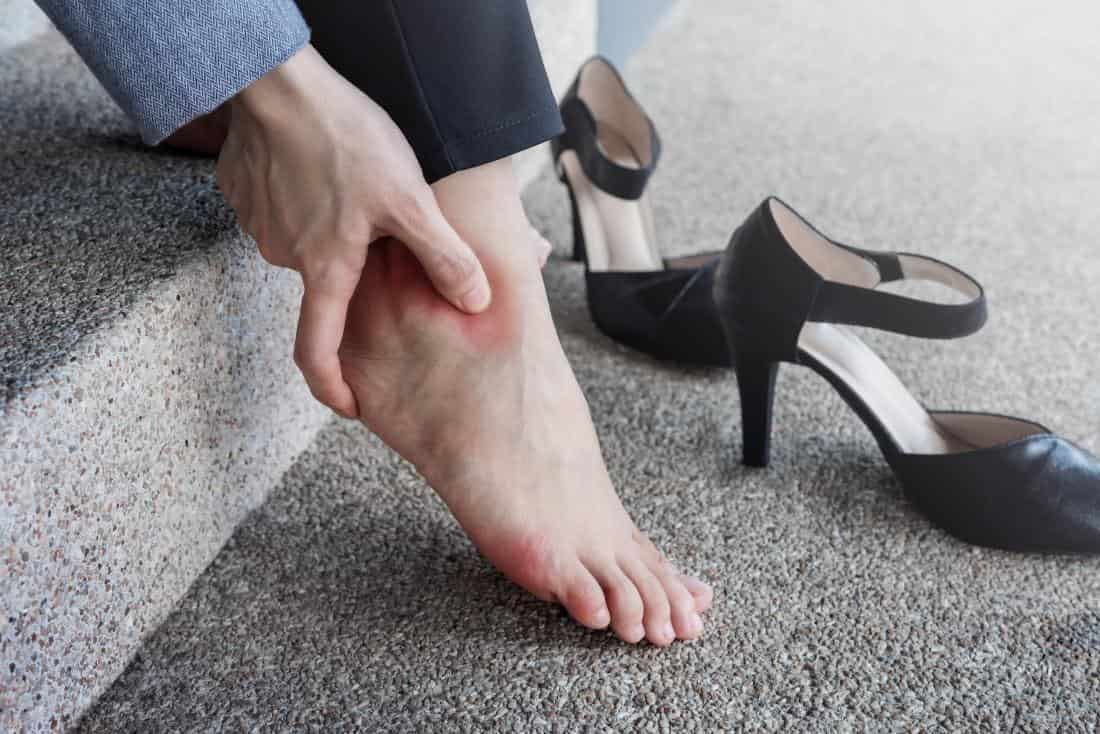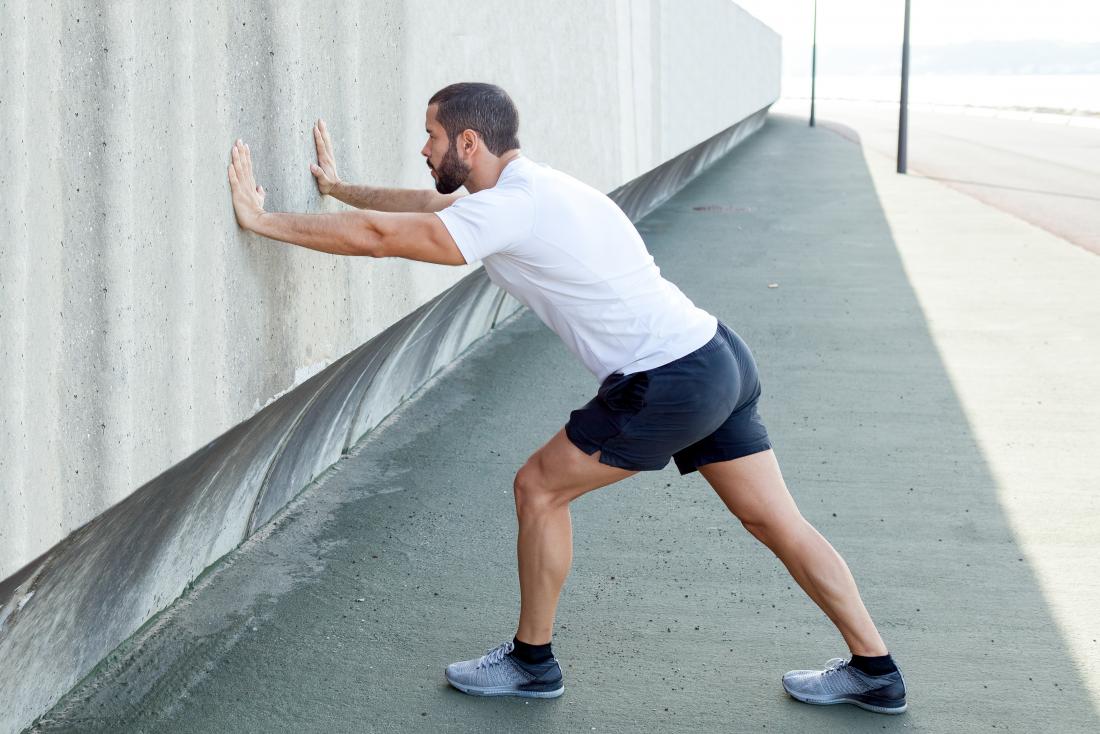SEVERE FOOT PAIN
Foot pain is caused by an injury, overuse or conditions that cause inflammation that involves any of the bones, ligaments or tendons in the foot. Injury to the nerves of the feet may result in intense burning pain, numbness or tingling (peripheral neuropathy).
Injury caused to the nerves of the feet might result in intense burning pain, numbness or tingling known as peripheral neuropathy. Your foot bears the overall weight of the body and plays a vital role in involuntary activities like standing, walking and sitting. Foot pain is usually referred to as pain or discomfort in one or more parts of the foot like toes, heels, arches and soles.
Foot pain might range from mild to severe and might last from a short duration to an ongoing issue. It is described by patients as throbbing pain, aching and stabbing pain and tender feeling.

CAUSES OF FOOT PAIN
Foot pain is usually caused due to poor lifestyle choices or certain medical conditions.
Lifestyle choices like wearing shoes that don’t fit properly, high-heeled shoes, injury due to high-impact exercise or sports activities like jogging and intense aerobics would lead to foot pain.
Long-term effects of poorly fit shoes would cause bunions, corns, and calluses, irritation of nerves and joints, and misalignment of the toes. Morton’s neuroma leads to thickening of tissue around a nerve located between the toes causing toe numbness and pain.
Medical conditions that might damage bones, ligaments or tendons in the foot would cause foot pain.
The foot is a complex structure consisting of 26 bones, 33 joints along with multiple muscles, tendons, ligaments, blood vessels, nerves, and lymphatics for support. The set of 26 bones form two crossing arches of the foot, longitudinal arch and the transverse arch.
Foot also consists of fat pads that help in bearing the weight of the body and absorb impact. The foot has various soft tissues that act as the primary defense system towards various external hazards like infections and trauma.
- Infectious Disease – Infection caused by viruses, fungi and bacteria might cause plantar warts, athlete’s foot disease, and in-grown toenail causing pain along with infection. People suffering from diabetes are more prone to infection.
- Systemic disease – like diabetes, lupus, gout, and rheumatoid arthritis might also cause foot pain due to inflammation accompanied with foot deformities. These foot deformities such as tarsal coalitions, calcaneal varus, calcaneal valgus, bunions, claw toes, mallet toes, hammertoes, and bone spurs lead to chronic foot pain.
- Injury and Trauma – Injury to tendons such as Achilles tendonitis or rupture causes inflammation along with pain. The pain can also be triggered due to micro-trauma injuries due to running on uneven surfaces, hard or too soft surfaces, or wearing shoes that have poor force-absorption qualities that are not activity-specific, or fit incorrectly (causing blisters or bruising).
- Plantar fasciitis – This causes inflammation in the thick band of tissue running across the bottom of the foot connecting the heel bone to toes or plantar fascia. This is common in runners, overweight people or wearing shoes with inadequate support.
- Tarsal tunnel syndrome – This is caused due to compression of the posterior tibial nerve that passes through the tarsal tunnel located inside the ankle.
- Metatarsalgia – This is the pain in the area of the ball of the foot resulting in loss of support by the ligaments connecting the metatarsal bones.
SYMPTOMS OF FOOT PAIN
Pain along with point tenderness is the main indicator of foot pain along with swelling, redness or erythema, bruising or ecchymosis, numbness, tingling and shooting pains. The pain may worsen at night travelling up to the calf and higher.

EXERCISE FOR FOOT PAIN RELIEF
Exercise helps in keeping feet strong and flexible and thus reducing foot and ankle pain, muscle soreness, improving overall foot health, and maintaining an active lifestyle.
Exercises would also improve range of motion and help limber the feet by reducing the chance of getting hurt. It is advised to practice slow and gentle stretching exercises to improve flexibility. Strengthening exercises will allow the muscles to provide better support and protection to the foot.
Some stretching and strengthening exercise help in improving pain and range of motion are:
- Toe raise, point, and curl – This 3 way exercise is beneficial to keep toes and feet moving. Toe raises exercise mainly focus on muscles in the lower leg, like the tibialis anterior located in the outer surface of the tibia, or shin. This muscle is accountable for flexing the foot upward and extending the toes.
- Toe splay – This movement is beneficial in getting control over the toe muscles. This can be practiced by sitting straight-backed in a chair with the feet gently resting on the floor and spreading all the toes apart. Hold the position for five seconds for maximum benefit.
- Toe extension – This stretch is beneficial in preventing or treating plantar fasciitis that causes heel pain. The muscles involved in this exercise are the extensor hallucis longus muscle, which is a thin skeletal muscle located between the tibialis anterior and the extensor digitorum longus. These would help in extending the big toe and dorsiflexes the foot.
- Toe Curls – These help in strengthening the muscles located on the top of the feet and toes. This exercise could be practiced by comfortably sitting in a chair with back straight and the feet flat on the floor. To feel the maximum stretch you can lay a towel on the floor in front of you and scrunch the toes to pull the towel towards you. Repeat it for a minimum of 5 times for maximum benefit.
- Marble pickup – This exercise helps in strengthening the muscles situated on the bottom of the feet and toes. This would also counteract the tendency of toes to curl.

- Big-toe stretch – Maintaining good range of motion in the big toe with this three-part stretch. Feet that tighten might lead to less flexibility and are more prone to injury. This stretching exercise would not only ease pain from plantar fasciitis but also prevent other foot pain conditions.
- Tennis ball roll – This would help ease the arch pain and treat plantar fasciitis by rolling the tennis ball with the foot. This would help massage the muscles and nerves to reduce inflammation, increase blood flow and reduce pain.
- Achilles stretch – This is beneficial in easing off pain of the Achilles tendon, which is a cord that runs up the heel into the calf muscles. The exercise would help increase flexibility and prevent foot, ankle, and leg pain.
- Sand walking – Walking barefoot on sand provides stretching of the muscles and strengthens the feet and calves. It is a good exercise as sand’s soft texture makes walking more physically challenging.
Apart from the above exercises, the warm foot bath helps in alleviating foot pain along with adding Epsom salts or baking soda. This would relieve the sore and swelling of muscles and can even reduce swelling in your feet. Other products like arch supports, or orthotics also keep the feet stable while standing or walking to eliminate pain.
OUTLOOK
Foot pain is common with people active in sports and other activities. Regular foot stretches and strengthening exercises would ease off heel and arch pain, and even prevent hammertoes and stop toe cramps. The stiffness and aches would also subside with regular exercise.
If you or anyone you know is suffering from severe foot pain, our expert providers at Specialty Care Clinics will take care of your health and help you recover.
Call us on (469) 545-9983 to book an appointment with our specialists.
